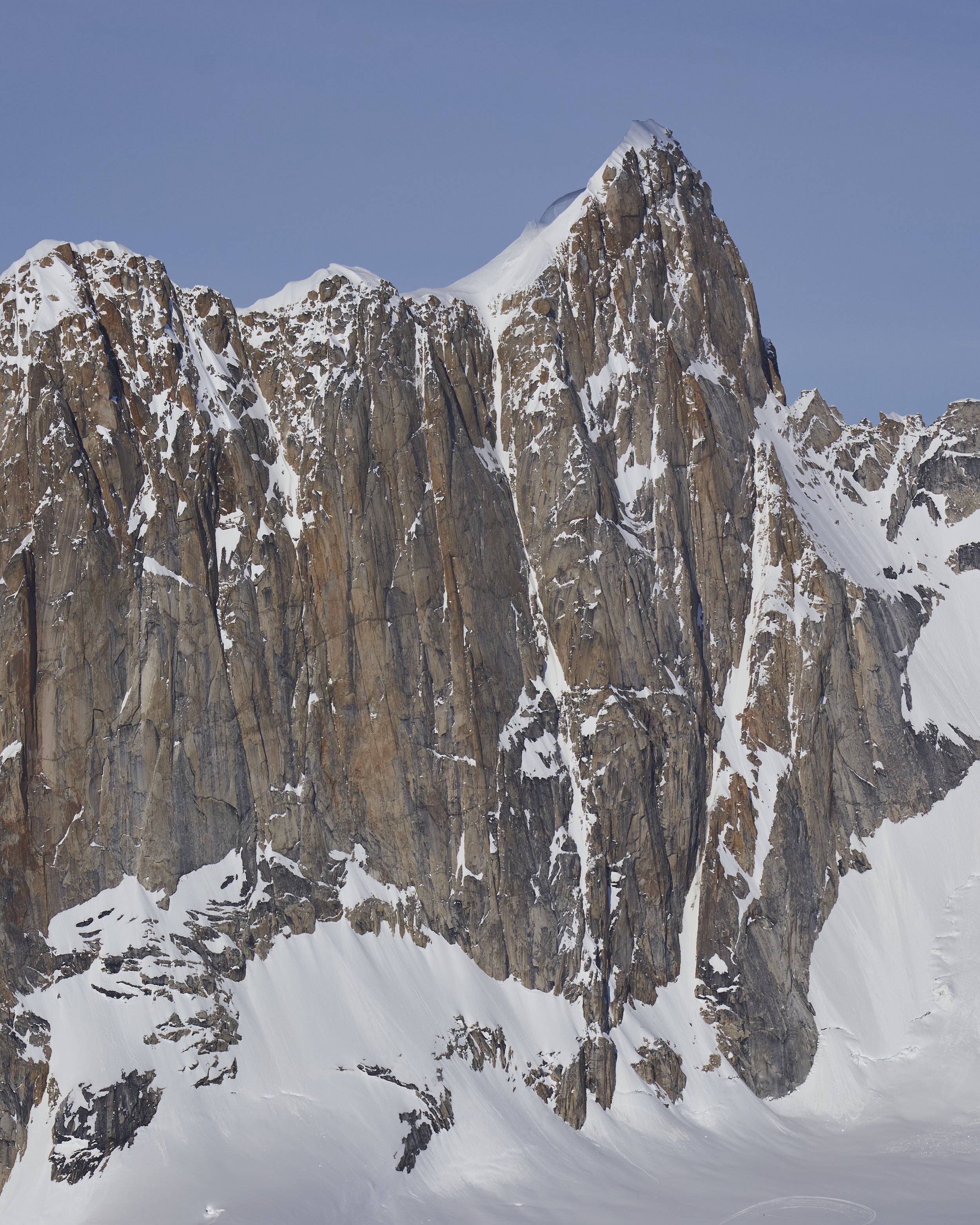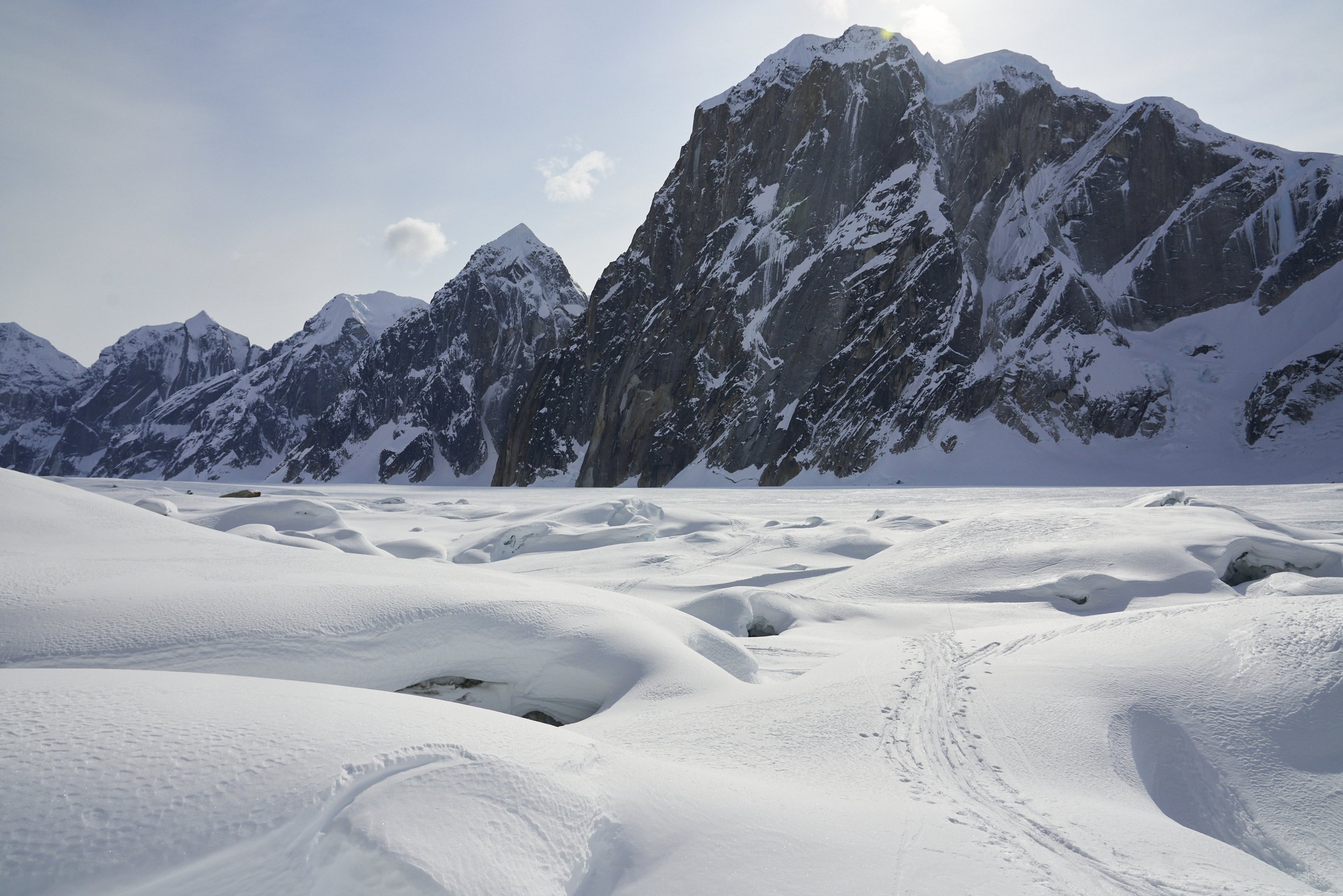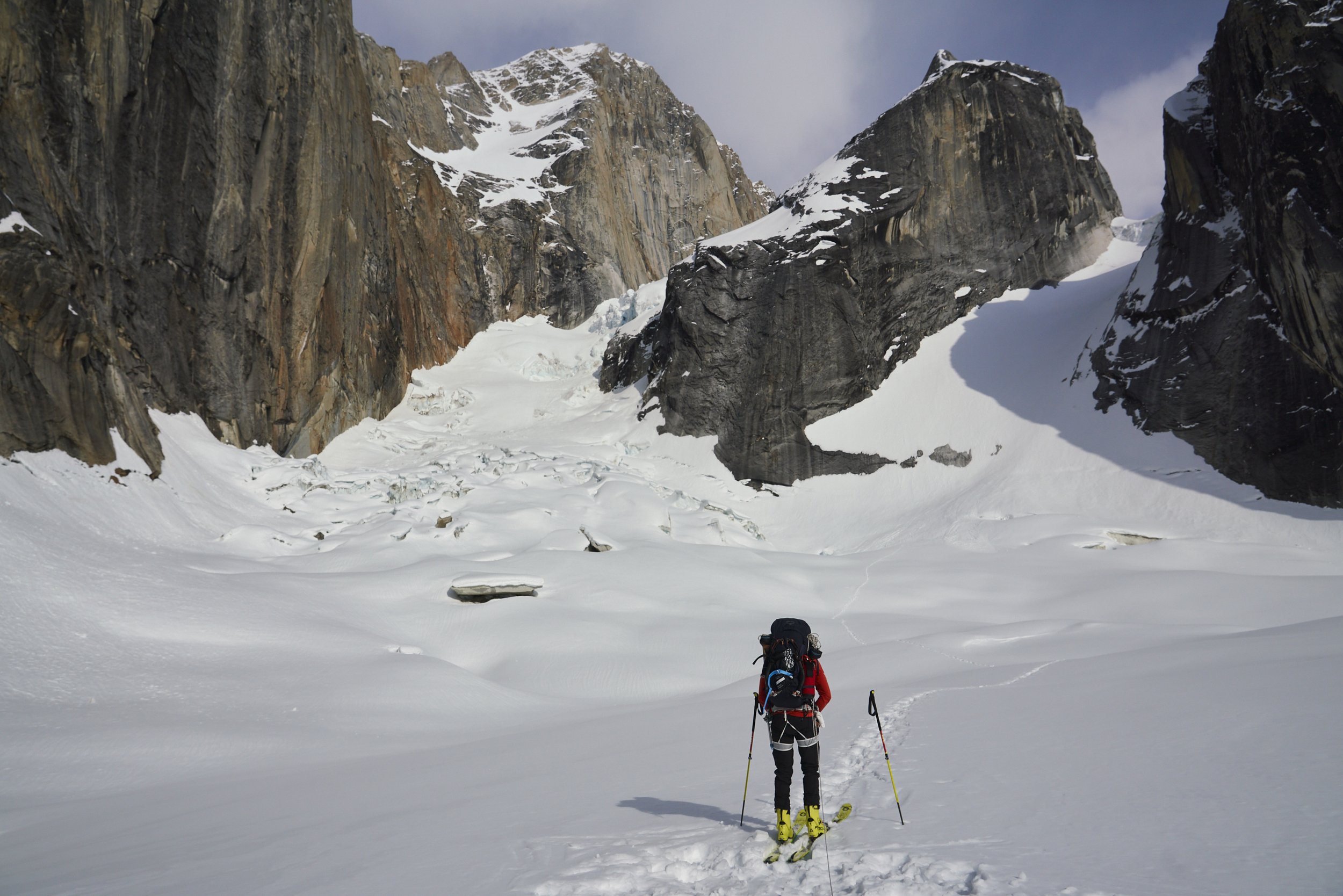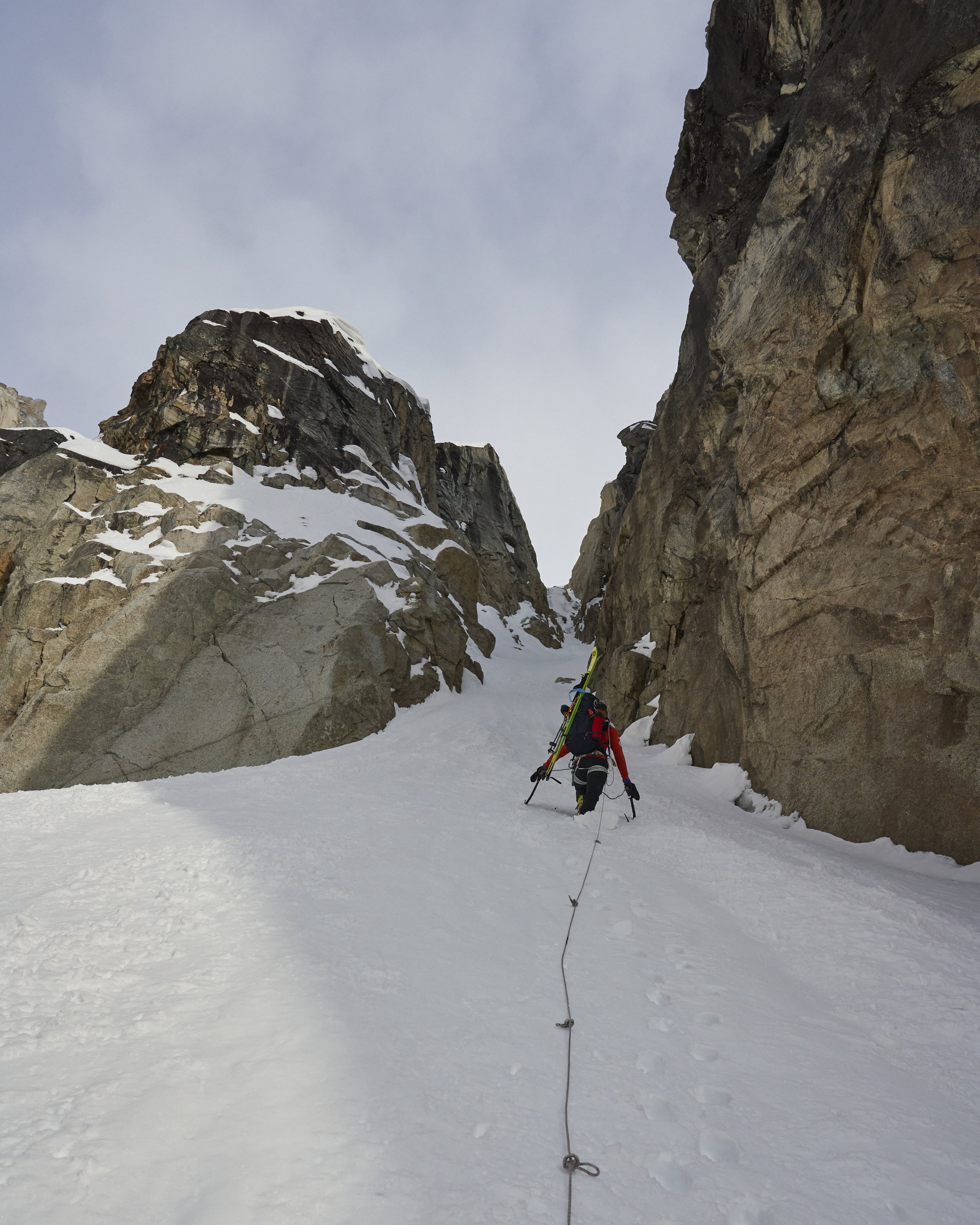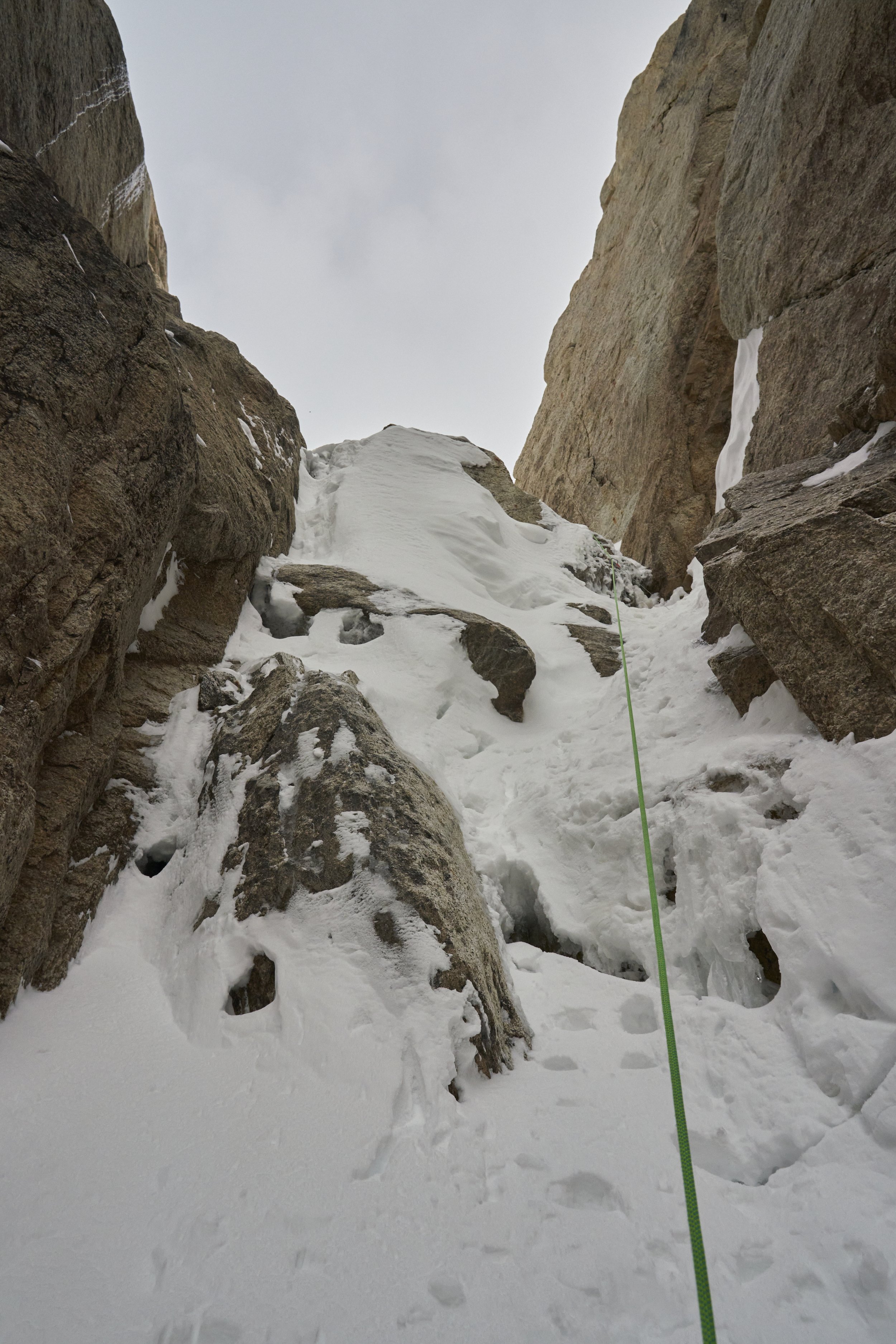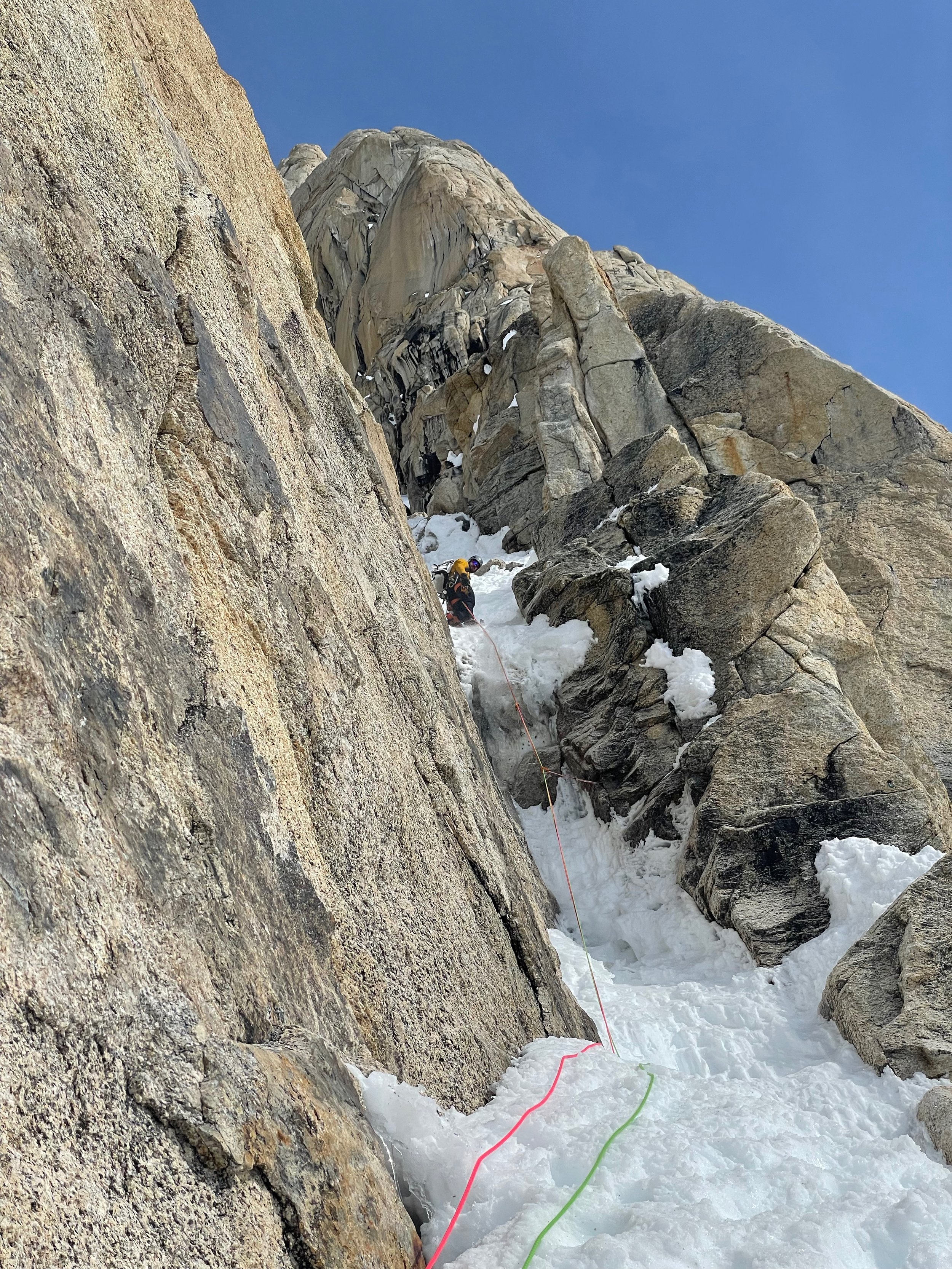Ham & Eggs from the Ruth Gorge
Ham and Eggs as seen from the summit of Mt. Dickey
Date: 4/15/22
Caltopo Link: https://caltopo.com/m/M0J4E
Strava Link: https://www.strava.com/activities/7057643294
Trip Report:
Before our Alaska trip, one big unknown was the feasibility of accessing the Root Canal from the Ruth Gorge. The Puryear guide makes it seem like a pretty casual, unremarkable option, but I had talked to several people that claimed the approach up to the Root Canal was pretty involved and would take at least a day. They strongly recommended getting dropped off at the Root Canal. After much deliberation, Chris and I decided to start from the Ruth Gorge. After all, we were going to Alaska to do Alaska shit, crevasses and ice falls be damned. Worst case, we could get a plane bump up to the Root Canal if the approach didn’t work out.
We woke up the morning after getting dropped off in the Ruth Gorge by TAT with our sights set on Ham and Eggs. We didn’t want to waste any good weather and Ham and Eggs seemed like a good first climb in the Alaska range. We left camp a little later than we had planned at 6 am and headed towards Mooses Tooth. There are two ice falls you can ascend to reach the Root Canal and we chose the one on the left. One thing worth mentioning, our awesome TAT pilot flew by the approach lines before dropping us off in the Ruth Gorge which was a big help to put eyes on our approach route to make sure it looked feasible.
After 1.5 miles of flat skinning, we reached our first technical difficulty: crossing the crevasses at the edge of Ruth Gorge. In retrospect, it was nice to get a little later start so the we weren’t relying on headlights through this section. The first morning in the Alaska Range, navigating the crevasse field felt pretty full on but still manageable. After maybe 300 meters of weaving our way through snow bridges, we were into the main approach “gully”. From here we found very moderate terrain and skinned heading climbers left to avoid some crevasses before cutting back right. We knew there was a rather narrow “hidden” couloir to bypass the upper portion of the icefall so we made our best guess as to where it was and headed that way. We found a good spot to cross the bergschrund and then made a high traverse on a ~50 degree slope back left to enter the couloir.
The couloir looked narrow and seemed promising. There were some twists and turns at the top so we weren’t entirely sure where it would spit us out, but we gave it a shot and headed up it. We pitched out the upper portion of it and found a 30m pitch with two M4 moves with some steep snow between them. They were poorly protected but short lived. We found a good picket placement before the second M4 move. Chris led this portion and found an existing anchor up and to the left. The couloir is a lot longer than it looks from the bottom as it gains almost 1000 ft.
From the top of the couloir, it’s pretty straightforward skinning to reach the Root Canal. Depending on snow conditions, there may be few short sections worth booting. Reaching the base of Ham and Eggs was a huge relief as we had gotten past the major uncertainty of the climb. We had a few reports that Ham and Eggs had been climbed the day prior and was in good condition, so we knew it was very doable. There’s plenty of info out there on Ham and Eggs so I won’t focus too much on it. A few things to note; the crux was the third pitch in my opinion. You had to pull a short overhanging ice roof. The feet were poor, but it was only two or three moves. What the guidebook calls the crux (the AI4 found on Pitch 8), seemed pretty casual in comparison. Obviously, things form differently year to year. Rappelling the route was straightforward other than the bottom section. The rappel route veers off the ascent route near the top of the first pitch, but I veered off our ascent route too early and ended up jugging back up the rope. Make sure you rap all the way until you hit the short section you must downclimb on the way up before veering off route.
We actually made our way up to the Root Canal twice during our trip; once in the beginning to climb Ham and Eggs and again later in the trip to climb Shaken Not Stirred. We climbed Ham and Eggs in a single push from the Ruth Gorge and our camp-to-camp time was 22 hours. The approach took us 5 hours. We decided to bivy at the base of Shaken the night before climbing it and even with bivy gear, the approach only took us 4.5 hrs to reach the base of the route once we were familiar with the route. We were also able to follow our tracks from our previous trip which was a big help. By the second week of the trip, the crevasses at the edge of the Ruth Gorge felt casual compared to what we encountered during the Peak 11300 descent. The return trip from Shaken took us less than 2 hours to get back to our camp from where we bivyed at the base of the route. This was with suboptimal snow conditions as well which caused us to side step down the majority of the narrow couloir. Also, the rap down the mixed steps can be made with a single, 60m rope. With good snow conditions and lighter packs, I have no doubt we could get down from the Root Canal in less than an hour.
I would recommend our strategy to set up base camp in the Ruth Gorge to anyone looking to climb more routes in the Gorge than just Ham and Eggs and Shaken Not Stirred. The Ruth Gorge is by far the most scenic base camp option with Mount Dickey looming above. It also gets good morning and evening light. The only downside is that the wind seemed to pick up every evening when the sun went down. The Ruth Amphitheater is less scenic but seems to be better protected from the nightly winds and is still centrally located. We used our Ruth Gorge base camp to approach the SW Ridge of Peak 11300. It’s a long skin (10 miles) but very straightforward and still only takes 5-6 hours at a casual pace. Not only does eschewing plane bumps save money, but it buys more climbing time in my opinion. Plane bumps will eat up 1-2 days by the time you pack up camp and then reestablish camp at the new location. Plus breaking down camp sucks, and who wants to dig up frozen tent stakes more than once? As cool as the plane rides are, I also feel like skinning to the objectives allows you to experience the terrain to a greater degree.
